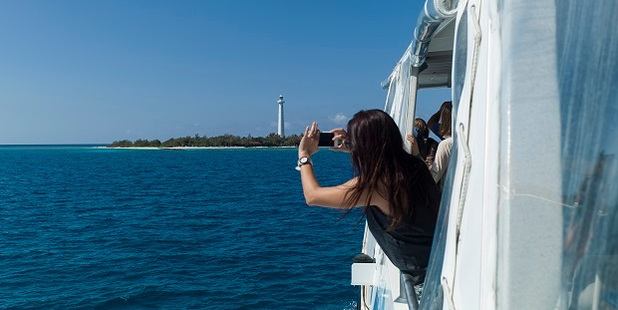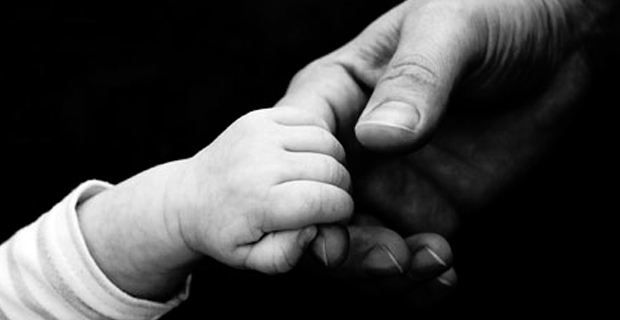Life is just a beach of parrot fish poo in New Caledonia for Maureen Marriner.
‘To see the world in a grain of sand …” so poet William Blake urged us to have a different view of the world. Well, I’m seeing it, horizontally, through the holes in the top of a raffia sun hat, it’s a world of blues and whites — and it’s looking beautiful.
We are on Amedee Island, a tiny, flat dot of white sand that is home to France’s first metal lighthouse, at 56m, one of the tallest in the world. It guards one of the three natural breaks in the New Caledonian barrier reef, which surrounds the world’s largest lagoon.
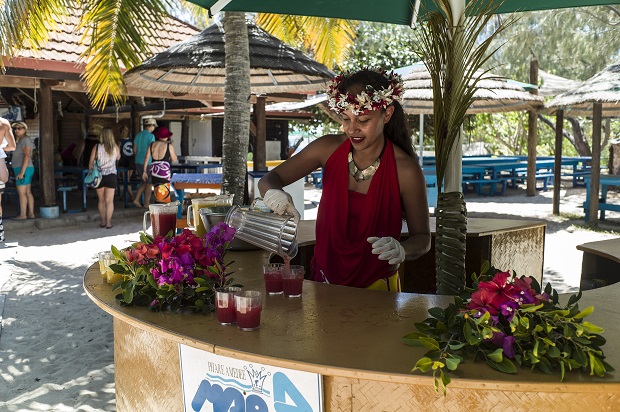
We are on a whistlestop in Noumea and this day trip seems to tick all the tourist boxes to keep us entertained, fed and watered. After a bus round-up from hotels at a civilised hour, we are welcomed aboard the double-deck catamaran Mary D Princess by frenetic music from a guitar and ukulele trio. The tune is the same all through, but to please the audience the lyrics are freestyle and in the middle, up pops Pokarekare Ana, still at the same breakneck speed.
On our 30-minute glass-bottom trip the first things we see are the prehistoric-looking sharksuckers or “lazy fish”. They have suckers on their heads and attach themselves to turtles, sharks etc, and glass-bottom boats, with the aim of snaring passing food scraps and parasites.
There are many more smaller fish but the highlight is sighting of green turtles, which are brown but named for the colour of their fat after eating all that sea grass. They come to the surface, poke their ancient protected heads above the water, breathe then sink again. We are warned not to touch them — it risks a fine of more than $1000.
We are also told about the glorious white sand. It’s parrot fish poo. The parrot fish feed on algae on coral but also take off chunks of the coral, which cleans their beaks but which they can’t digest, so out it goes. One parrot fish can produce one tonne of sand a year.
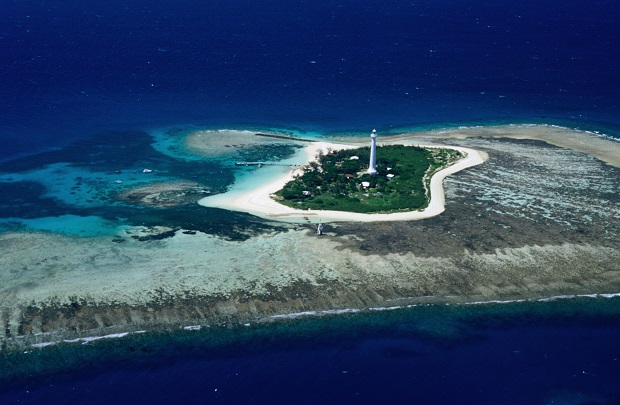
From the smaller vessel we are back on the Mary D, with more music and more smiles to head out the reef.
The sky is cloudless and the colours amaze as we move over differing depths. Think of all the exciting blues — they are all there and more, from the aquamarine in the shallows out to the Curacao blue out deep and the Wallis blue (1.5 parts gin, 1 part blue Curacao, 1 part lime, sum of parts, sublime) in between.
The water’s ripples breathtakingly facet the colours. When we stop, the wildlife comes around: barracuda, turtles, the gloriously weird dugongs and smaller, faster fish with blue or yellow tails.
The return journey is full throttle to the island where crew not on reef duty have been preparing lunch, all of which had been brought over in the morning. There’s rum punch cocktails then a big spread with wine and juice. I never get past the salads: poisson cru, tuna mayonnaise, Caesar salad, artichokes, noodles, rice …
There is also hot tuna, beef, chicken, curries. During lunch, the music trio becomes a quartet with a large upturned black plastic bucket, pole and tightened string: Mr Bass Man, island styles. It’s all done with much exuberance then girl crew members provide the floor show with Tahitian dancing, lei-noosing some of the audience to join them on stage. Bill, from a Hawke’s Bay school group, is the star when his T-shirt is whipped off and he is costumed in a plastic/grass skirt and coconut-shell bra. Bill does The Bay proud.
As we are entertained, others in the crew are at work cleaning half-drum ovens and dealing with dishes. Everyone from the captain down is involved in all aspects of the day and they do it all smiling — with eyes as well as mouths.
After lunch we try to work off the meal with a walk around the island. We give a generous berth to several of the thin blue and black and yellow and black sea snakes that come ashore to digest. They are about 1m long and poisonous but afraid of humans. On the far side of the island it is just us, the breeze and the sound of the water edging on to the sand.
However, the walk takes less than 10 minutes so we climb the 247 spiral stairs of the lighthouse. It was built in 1862 in Paris, where it stood for two years as a test of its stability, before being disassembled, packed into 1200 crates and shipped to Amedee, from where it has been shining since 1865, its warning visible from more than 60km. The view from the top adds to a day of superlatives and then our remaining time on Amedee is for seeing the world through sunhat holes, snorkelling and swimming.
Our return trip has more music and singing, still more as we disembark. And tomorrow they will do it all again, smiling all the way.
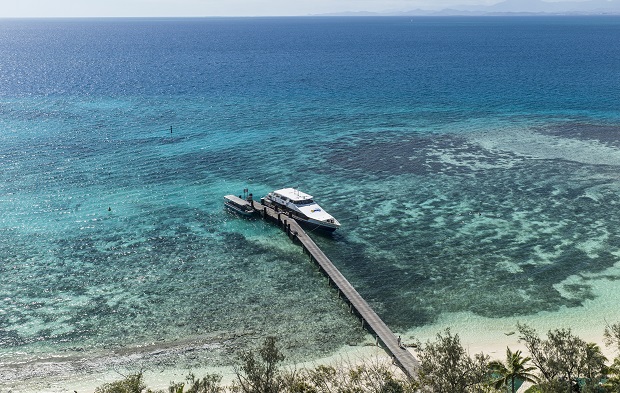
CHECKLIST
Getting there: The international airline of New Caledonia Aircalin, operates five flights per week non-stop from Auckland to Noumea. Flights take three hours from Auckland.
Further information: See amedeeisland.com and newcaledonia.travel.
-NZ Herald


























